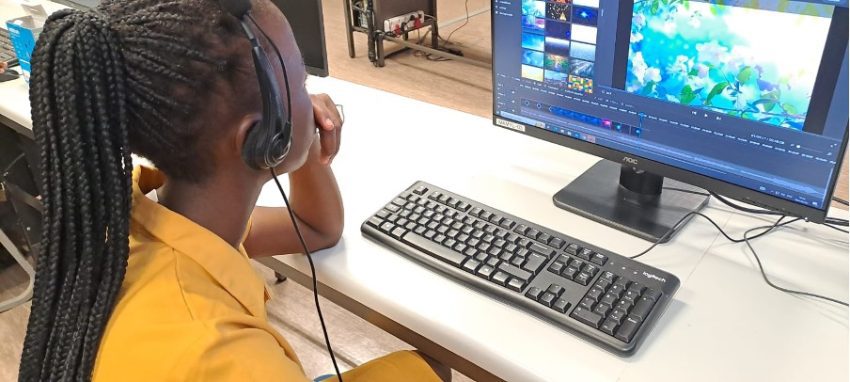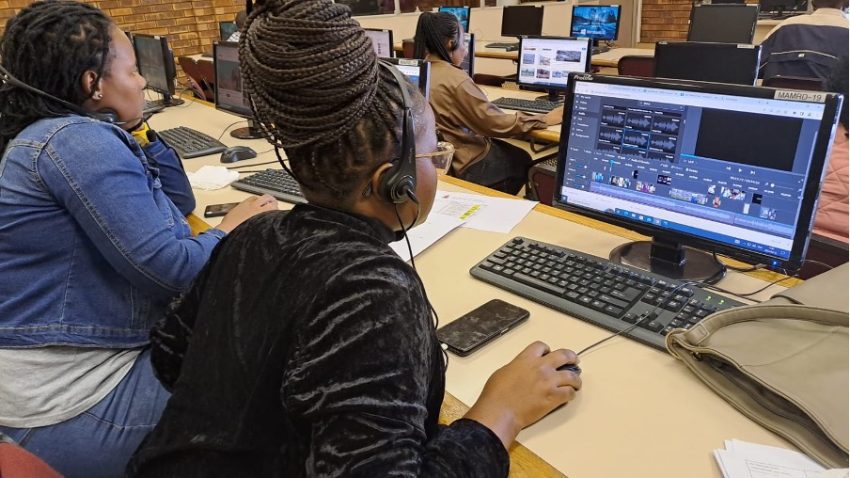Capturing stories of the Mamelodi community using digital video editing software
Thursday, August, 29th, 2024 News
By: Martina Jordaan
University of Pretoria

The Mamelodi township is situated east of Pretoria, South Africa. It is home to more than 1 million people. Many people in the township still live in temporary housing without electricity or running water. In my role as Head of Community Engagement Research at the University of Pretoria Mamelodi campus, I work closely with the residents of Mamelodi to identify their needs and develop solutions that address the issues they face. Mamelodi is in one of the seven townships around Pretoria in South Africa. The township struggles with issues such as crime, violence, HIV, educational inequality, and severely high unemployment rates. The township was established, and later, the name changed to Mamelodi. In 1953, the Group Areas Act (Mabin, 1992) designated Mamelodi as a blacks-only area, and black citizens were forcefully removed from the suburb of Lady Selbourne in Pretoria to Mamelodi. The four-roomed brick houses were constructed by the government in Mamelodi in 1956 (Smith, 2022). Post-Apartheid the Mamelodi community is still a majority black ethnic origin, mainly black South Africans, and the main language spoken is Northern Sotho (Strydom, 2006). However, there are 12 official languages in South Africa, and a mixed language is spoken in the street, called “isi-Pretoria”. There are 52 schools in the township. Most people are either unemployed or self-employed through informal and casual trade.
The Historical Society of Mamelodi, a group of senior citizens from the community, has partnered with the University of Pretoria to capture and share the history of Mamelodi on a digital platform. The project’s main objective is to collect and share local community stories in a more accessible way through video-based stories that are recorded using a cloud-based video editing software, WeVideo and uploaded to YouTube. The initiative provides an opportunity for community members to learn basic computer and desktop research skills, and create their own visual stories to be uploaded onto a dedicated YouTube channel. The ultimate goal is to create a channel that is accessible to everyone, including the community and broader society, to view these stories. Initially, community members needed basic computer and desktop research skills.

Secondary school learners create their own videos using the cloud-based video editing software
The students who enrolled in the Community-based project module of the Faculty of Engineering, Built Environment, and IT presented the basic computer skills course, and a lecturer from the Department of Informatics presented a session on desktop research. Thereafter, the researcher trained the community members to use WeVideo. As the project progressed, interviews were conducted with senior citizens unwilling to create their own videos, and BsocSci Honours students joined the project to create ArcGIS storymaps. The project was extended to involve learners from secondary schools in creating their own digital stories as members of the Historical Society, who also created ArcGIS storymaps.
The Historical Society of Mamelodi now has a website, YouTube channel, and LinkedIn profile. Additionally, the research conducted with the Historical Society of Mamelodi will be featured in the upcoming research magazine of the University of Pretoria and during Heritage Month celebrations on campus. The project has enhanced the prestige of the Historical Society of Mamelodi in the local community, and its members are also active in other projects of the Mamelodi campus.
I am grateful for the opportunity to work with the community of Mamelodi, and I am, proud of what we have been able to accomplish together. I look forward to continuing this work and making a positive impact on the lives of those we serve. South Africa still faces many challenges today, and it is important to continue striving for a more equal and inclusive society. I am committed to doing my part in that effort, and I hope that my experiences can inspire others to join me in this journey.

Community members learning how to use the cloud-based video editing software
Barnes, T., Baijnath, N., & Sattar, K. (2010). The restructuring of South African higher education: Rocky roads from policy formulation to institutional mergers, 2001-2005. Pretoria: University of South Africa.
Breed, C. A. (2012). The transient aspects of city life: their understanding and interpretation for design purposes. South African Landscape Architectural Reader. Pretoria: UNISA.
Smith, E. T. (2021). Throwing the Bones: Postsecondary Education in Mamelodi, 1947 to 2017 (Masters dissertation, University of Pretoria (South Africa)).
University of Pretoria,” University of Pretoria Historical Overview“,From: University of Pretoria,[online] Available at: www.up.ac.za